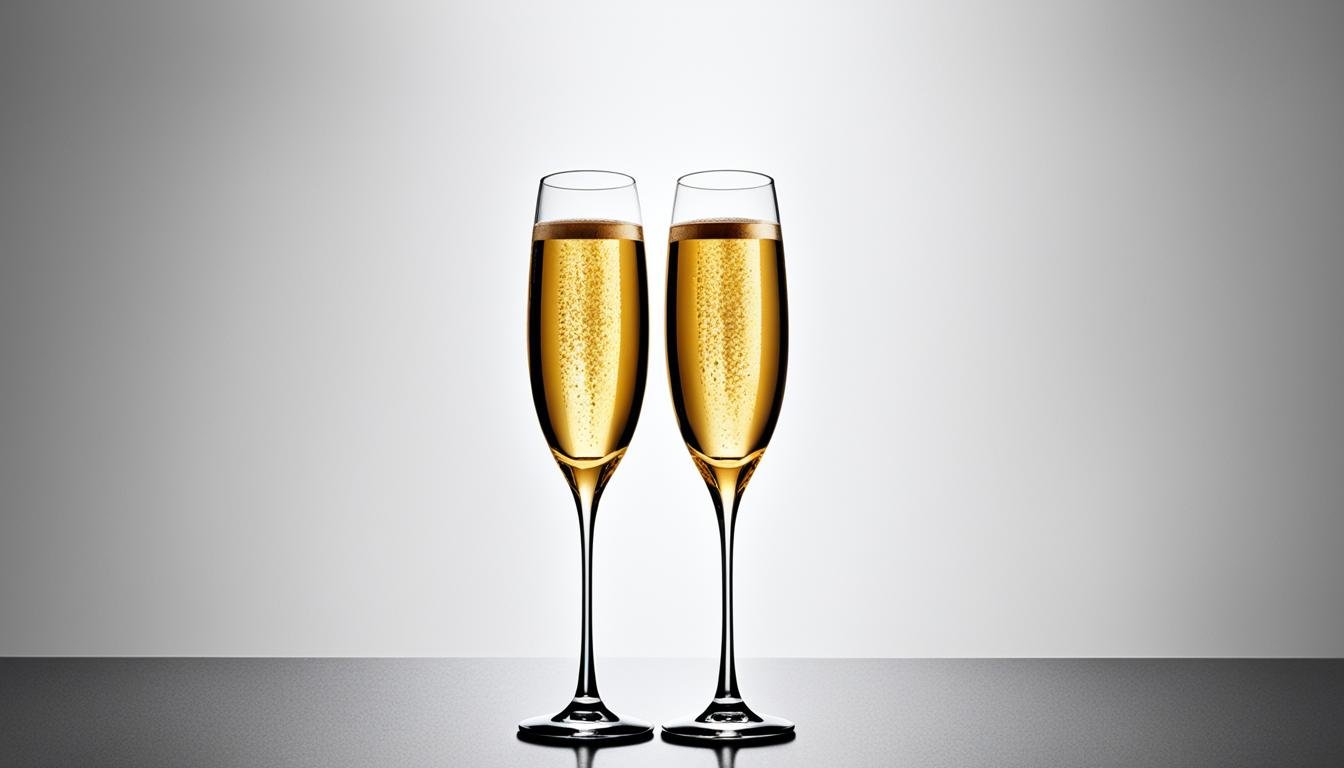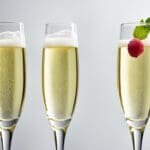Did you know a bold French widow started the Veuve Clicquot champagne brand? Barbe-Nicole Clicquot changed the way we see champagne today. She used a new method, the riddling table, to make champagne clear and sparkling. Now, we link champagne with elegance and happiness.
Veuve Clicquot Ponsardin stands out for its daring steps forward. But the famous Moët & Chandon is also a big name in the world of champagne. Known in over 150 countries, it has quite a history. Luminaries like Napoleon Bonaparte and Roger Federer have loved their champagne. This has made Moët Hennessy brands truly iconic.
Origins and History
Moët & Chandon and Veuve Clicquot are famous for their luxury wines, known as champagne. Both brands come from the French vineyards of Champagne. They are famous for their unique stories and the quality of their champagnes.
Moët & Chandon’s Roots
In 1743, Claude Moët started Maison Moët in Épernay. It was his grandson, Jean-Rémy Moët, who made Champagne popular all around the world. The Moët family grew their business. Then, in 1832, there was a big partnership. Claude’s great-grandson Victor and his brother-in-law Pierre-Gabriel Chandon merged their families’ businesses. This started the Moët Hennessy brands we love today.
Veuve Clicquot’s Beginnings
The Veuve Clicquot Ponsardin house began in 1772. Philippe Clicquot, a banker and textile merchant, started it in Reims. But it was Philippe’s daughter-in-law, Barbe Nicole Ponsardin, who really made the Veuve Clicquot name famous. After Philippe’s son died in 1805, Barbe Nicole took control. She turned the business around, saving it from bankruptcy. This is when she was called “Veuve Clicquot,” which means “widow Clicquot.”

Moët & Chandon and Veuve Clicquot have made a big impact on the luxury wine world. They have special histories that still influence what makes Moët different from Veuve Clicquot today.
Production Methods and Innovation
Making top-quality champagne needs a mix of old ways and new ideas. Moët & Chandon and Veuve Clicquot shaped how champagne is made today. They are key in creating the techniques that set the region’s sparkling wines apart.
Madame Clicquot’s Riddling Table
Madame Clicquot of Veuve Clicquot Ponsardin did something special for the industry. In the early 1800s, she made the riddling table. This table helps champagne become clear and bright by getting rid of sediment.
Bottles are stored upside down and gradually turned, forcing dead yeast to settle for easy removal. This process, still used today, modernized champagne’s appearance into a clear, sediment-free wine.
Her brilliant invention made it possible for champagne to be so clear and bubbly. It shows how Veuve Clicquot Ponsardin led the way in technology.
Blending Expertise
Both Moët & Chandon and Veuve Clicquot excel at blending wines. Mixing different wines just right is key to their great tastes. Moët Impérial, from Moët & Chandon, uses over 100 wines. It shows a perfect mix from different places.
Veuve Clicquot’s Yellow Label uses up to 60 wines to make their taste rich and complex. This mix makes them stand out. The way they blend is what makes each brand unique.
Difference Between Moët & Chandon and Veuve Clicquot Champagne
When we talk about luxury wines and champagne brands, Moët & Chandon and Veuve Clicquot shine. They are famous French brands known for unique champagne taste profiles. Although they both are top-quality, they have clear differences. These differences make one stand out from the other.
Flavour Profiles
Moët Impérial by Moët & Chandon blends Chardonnay, Pinot Noir, and Pinot Meunier. This mix creates a balanced, fruit-forward and elegant taste. It also has subtle fruit and nut flavors. Veuve Clicquot relies more on Pinot Noir, giving its wines a bold, full-bodied taste.
Veuve Clicquot’s Yellow Label is famous for being smooth, buttery, and toasty. It also has a hint of apple-like sourness, making it refreshing.

Alcohol Content and Cocktails
Moët Impérial and Veuve Clicquot Yellow Label both have 12% alcohol. This level makes them perfect for many events. They work well alone and in cocktails.
They add style and flavor to drinks like the Champagne Cocktail. This mix of champagne and bitters highlights their taste. The French 75, with champagne, gin, lemon, and sugar, is another favorite. It’s both classy and fresh.
Moët Impérial offers fruity elegance, while Veuve Clicquot Yellow Label shows richness. Both meet different tastes and needs, proving their excellence in champagne taste profiles.
Conclusion
Moët & Chandon and Veuve Clicquot have many similarities but offer different flavour profiles. They cater to various champagne lovers. Moët shines with its fresh and fruity tastes. Plus, it’s more affordable, making it a hit in Australia.
On the other hand, Veuve Clicquot stands out with its rich, buttery Champagne. Thanks to its distinctive Pinot Noir influence, it was the most sold champagne globally in 2020.
Both Moët & Chandon and Veuve Clicquot showcase the true art of French vineyards. They blend various grapes to create balanced Champagnes that reflect the region’s spirit.
Do you enjoy the fresh side like Moët, or the deeper flavours of Veuve Clicquot? Either way, these champagne brands stand for quality, honoring the French vineyards rich tradition.
FAQ’s
What are the origins of Moët & Chandon and Veuve Clicquot?
Moët & Chandon began in 1743 thanks to Claude Moët from Épernay. The Clicquot House started later in 1772 under Philippe Clicquot from Reims.
What innovation did Madame Clicquot introduce to champagne production?
Madame Clicquot came up with the riddling table. This table holds bottles upside down, turning them to remove dead yeast. This made champagne clear, without any sediment, a process still used today.
What are the key differences in flavour profiles between Moët Impérial and Veuve Clicquot Yellow Label?
Moët Impérial highlights Chardonnay, Pinot Noir, and Pinot Meunier for a fresh, fruity taste with hints of nuts. Veuve Clicquot Yellow Label, on the other hand, is known for its Pinot Noir strength. It offers a rich, buttery flavour with a hint of apple tartness.
How do Moët & Chandon and Veuve Clicquot differ in their blending expertise?
Both Moët & Chandon and Veuve Clicquot are skilled at mixing grapes from several places. Moët & Chandon’s Moët Impérial combines over a hundred wines. Meanwhile, Veuve Clicquot Yellow Label mixes grapes from about 60 different areas.
What is the alcohol content of Moët Impérial and Veuve Clicquot Yellow Label, and how are they used in cocktails?
The alcohol content is the same for both: 12% ABV. They’re great by themselves and also work well in cocktails. For example, a Champagne Cocktail with bitters or a French 75 with gin, lemon, and sugar.
User Review
( votes)Sip smarter, subscribe now!
Subscribe for gourmet tips, event updates, travel ideas, and a free e-book on Food Pairings. Start your journey to culinary and travel excellence!













